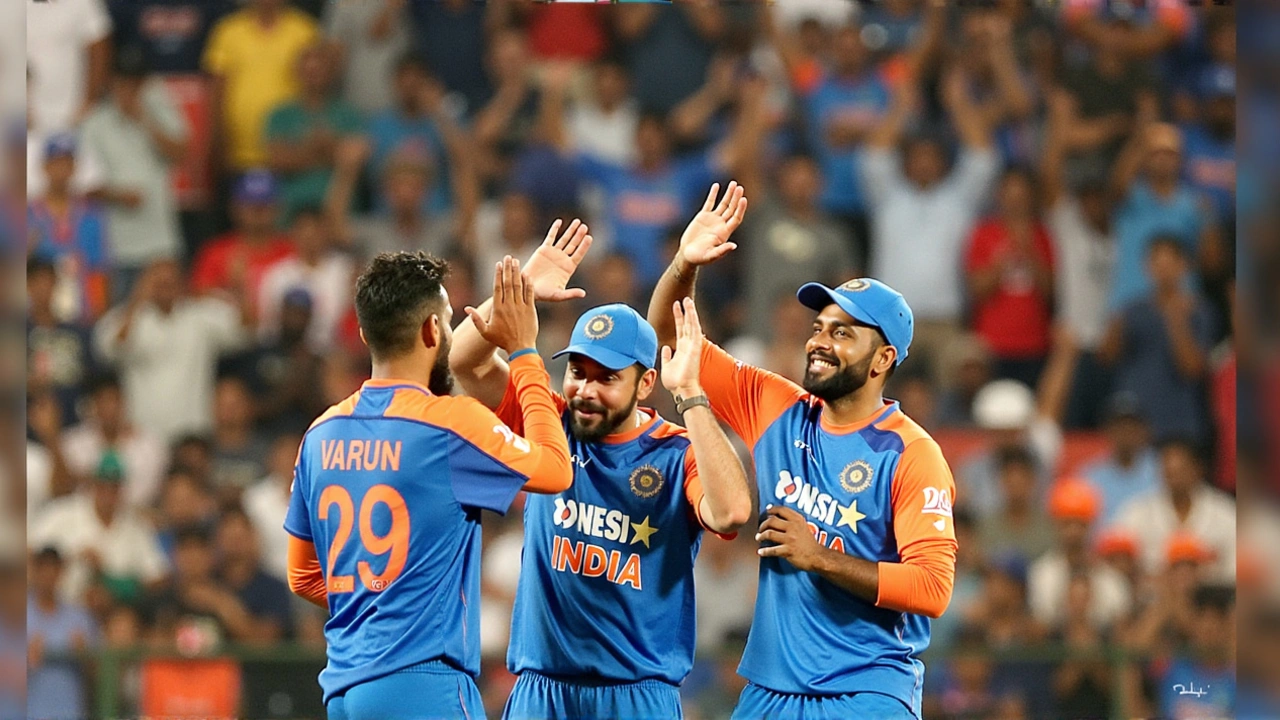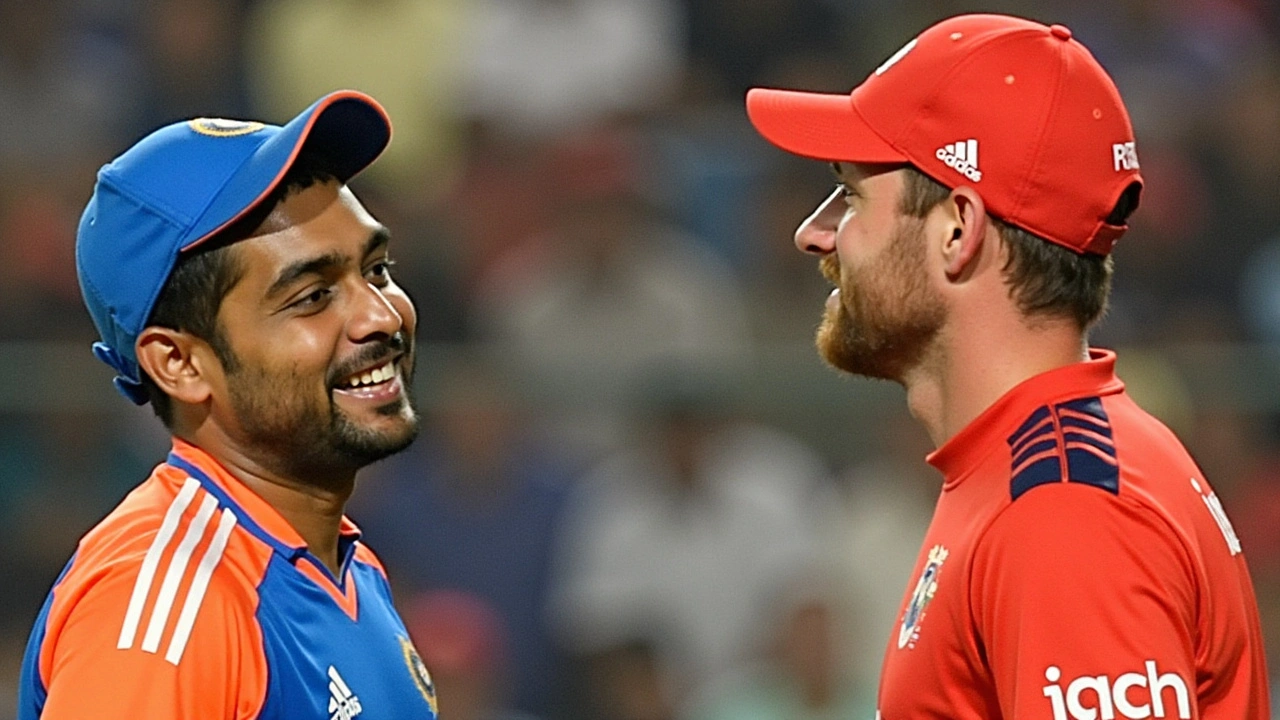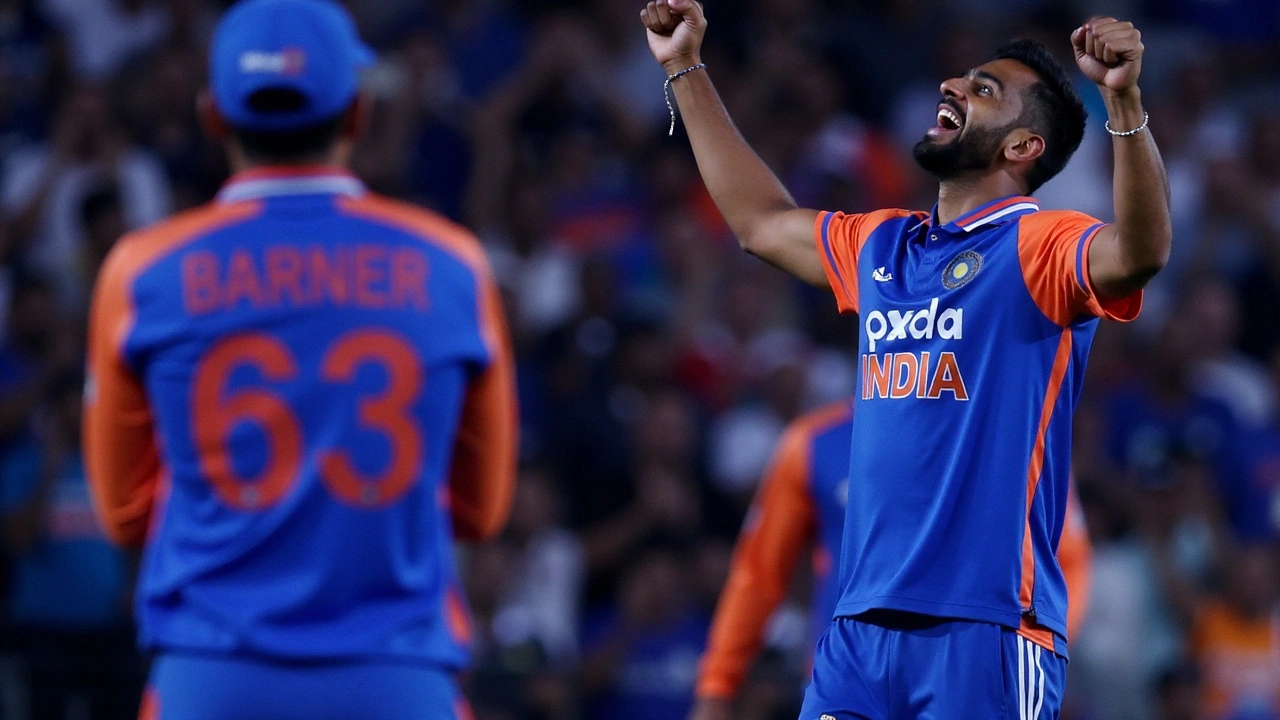India Triumphs in 4th T20I Against England
The vibrant city of Pune bore witness to a thrilling contest as India secured a fantastic 15-run victory against England in the fourth T20 International, clinching the series 3-1. The nail-biting match, which took place on January 31, 2025, was filled with stellar performances, most notably by Hardik Pandya and Shivam Dube, who both scored compelling half-centuries, each marking 53 runs. Their admirable batting solidified India's strong position, culminating in a robust total of 181 for 9 in the span of 20 overs.
Outstanding Performances from India
Throughout the match, India's strategy seemed to harness both a strong batting lineup and formidable bowling. Pandya, celebrated for his aggressive playing style, enthralled audiences with his power-hitting capabilities. Complementing Pandya's prowess was Shivam Dube, who, with his sturdiness and calculated shots, ensured that the runs kept flowing, pushing the score to a competitive total. The top-order batting, often seen as a cornerstone for the team's success, provided the needed momentum, yet it was the calibrated middle-order partnership that truly anchored the team towards a formidable score.
Complementing the batting heroics was the astute bowling show by Ravi Bishnoi. His deft wrist spin proved to be a formidable challenge for England's batters, yielding 3 critical wickets for merely 28 runs and playing a pivotal role in stalling England's chase. His ability to leverage turn and bounce on the Pune track added complexity to England's attempts to reach the target. This young spinner's remarkable performance not only garnered applause but also underscored the tactical depth in India's bowling department.
England's Aggressive Strategy Falls Short
Brimming with determination, England arrived on the grounds with aggressive strategies, particularly targeting the Indian spinners known for their tactical nous. This approach had yielded dividends earlier in the series, putting spinners on the back foot. Yet, in this crucial fixture, it turned out to be less successful. Although Harry Brook put up a resilient fight by contributing 51 runs to the total, England's lineup crumbled against India’s persistent bowling attack. Despite flashes of brilliance, their batting couldn't sustain the pressure exerted by India's bowlers, leading to their downfall in 19.4 overs with a total of 166 runs.
England's campaign was further dampened by a combination of middle-order collapses and frequent loss of wickets. The inability to forge lasting partnerships, coupled with adept fielding by India, thwarted their pursuit of the target. Notably, England's reliance on pace over spin in their response was an aggressive yet ineffective approach in front of India's well-rounded techniques. As a result, even the promising starts couldn’t be capitalized into a consistent scoring spree.

Implications of the Series
This series cements India’s remarkable streak, marking their 18th unbeaten T20I series at home, reinforcing their dominance on the national turf since their last defeat against Australia six years prior. The series, characterized by a strategic battle between India’s spinners and England’s pace-driven tactics, highlighted the evolving dynamics of T20 cricket, emphasizing adaptability and strategic agility. Each game unfolded new challenges and opportunities for both teams, showcasing the unpredictability and excitement that define this format.
Looking Ahead
India's victory reverberates beyond immediate gratification, instilling confidence and serving as a testament to their depth in both batting and bowling sectors. Emerging from this series is the reinforced synergy among players, the strategic ingenuity by the coaching staff, and a bolstered belief in handling high-stakes encounters. For England, despite the series loss, the games offered invaluable lessons in adaptability and strategic improvisation, crucial for refining their approach in future contests.

A Dynamic Cricket Scene
The T20 format continues to evolve, compelling teams to keep reshaping strategies and innovate continuously. As teams like India hold steadfast to their strengths and regroup to address weaknesses, the global cricket narrative is richer and more competitive than ever. This series serves as yet another chapter in the growing tapestry of cricket, where skills, pressure, and adaptability converge on the pitch, captivating fans worldwide. Hardik Pandya’s leadership alongside emerging talents like Ravi Bishnoi spotlight India’s blend of experience and youth, offering a beacon of guidance for aspiring cricketers aiming to make their mark on the international stage.


Jay Patel
February 1, 2025 AT 16:40fathimah az
February 2, 2025 AT 21:35Sohini Baliga
February 3, 2025 AT 12:03Senthil Kumar
February 4, 2025 AT 18:09Anu Baraya
February 4, 2025 AT 21:43Divyangana Singh
February 5, 2025 AT 23:19Harsh Vardhan pandey
February 7, 2025 AT 14:28Shatakshi Pathak
February 9, 2025 AT 11:23